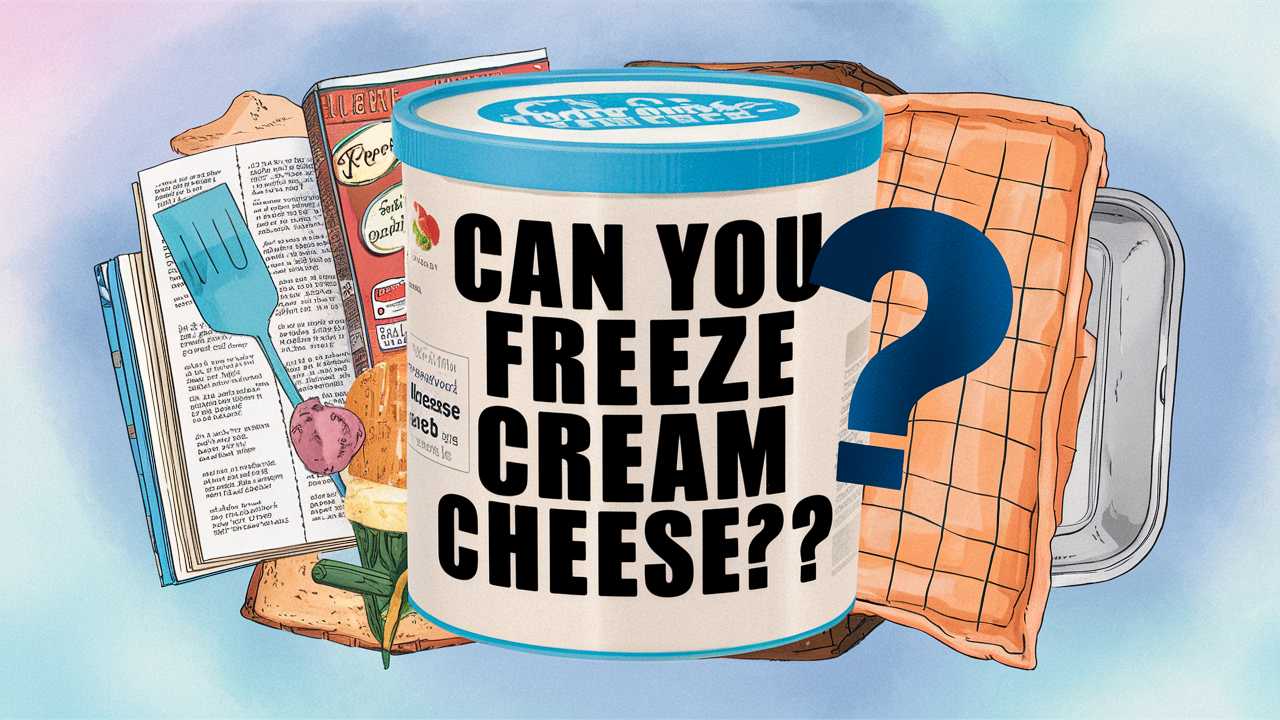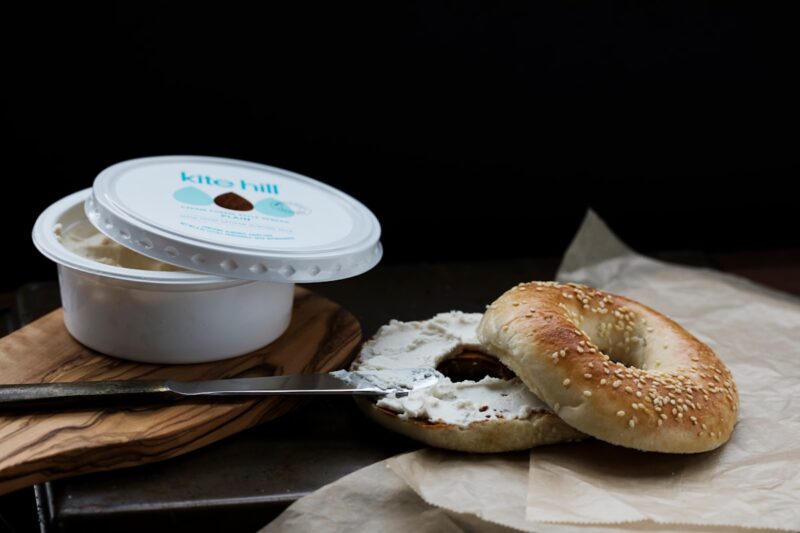Cream cheese is a staple in many kitchens, beloved for its versatility and rich, creamy texture. Whether used in savory dishes like dips or sweet treats like cheesecakes, it seems to find its way into countless recipes. But what happens when you have leftover cream cheese?
Can you freeze it to enjoy later? In this comprehensive guide, we’ll explore this delightful dairy product, from freezing techniques to storage tips, and everything in between.
Can You Freeze Cream Cheese?
Yes, you can freeze cream cheese! While many might hesitate to do so, fearing a compromise in quality, freezing can be a practical solution for preserving unused cream cheese. However, achieving the best results requires understanding the freezing process.
How to Freeze Cream Cheese
Step-by-Step Guide
Choose the Right Cream Cheese: Start with fresh cream cheese. If it’s close to its expiration date, it’s best to use it before freezing.
Portion Control: If you know you won’t use the entire block, consider dividing it into smaller portions. This allows you to thaw only what you need later, minimizing waste.
Wrap Properly: To prevent freezer burn, wrap each portion tightly in plastic wrap. Ensure there are no air pockets. For added protection, you can place the wrapped portions in an airtight container or a resealable freezer bag.
Label and Date: Use a permanent marker or label stickers to write the freezing date and quantity on each container or bag. This step helps you keep track of how long it’s been stored.
Freeze: Place your wrapped cream cheese in the freezer. It is typically best to store it in the coldest part of your freezer, such as the back.
Thawing Cream Cheese
The next step in our journey is what happens once you’re ready to use your frozen cream cheese. Here are some effective thawing methods:
Refrigerator Method: The best way to thaw is to move it to the refrigerator for several hours or overnight. This gradual method helps maintain texture.
Cold Water Method: If you’re short on time, seal the cream cheese in a waterproof bag and submerge it in cold water for about 30 minutes.
Microwave Method: Though this method is faster, it can lead to uneven results. Use the defrost setting on your microwave, checking frequently to avoid melting the edges too much.
Changes in Texture Post-Thaw
It’s essential to note that freezing cream cheese can alter its texture slightly, making it grainier than when fresh. This change occurs because of the high water content, which forms ice crystals during the freezing process.
However, this texture shift doesn’t mean your cream cheese is ruined! It can still be effectively used in recipes. For example, it’s perfect for baking, where the creaminess will return once mixed into batters, or in dips where the texture won’t be as noticeable.
Tips for Using Thawed Cream Cheese
Once you have thawed your cream cheese, you may wonder how best to utilize it. Here are some creative ideas:
Smoothies: Blend thawed cream cheese into smoothies for a rich, creamy body.
Baking: Incorporate it directly into muffin or brownie batters. The change in texture will go unnoticed.
Savory Sauces: Use thawed cream cheese in pasta sauces or as a base for a creamy soup.
Frosting: Whip it back into shape for frosting cakes and cupcakes.
Storage Duration
You might be curious about how long frozen cream cheese remains edible. Typically, it can last in the freezer for up to 2 months while retaining decent quality. However, for the best taste and texture, aim to use it within the first month.
Different Forms of Cream Cheese
There’s more to cream cheese than just the standard block! Let’s explore the various kinds of cream cheese and their freezing capabilities:
Spreadable Cream Cheese
Softened for easy spreading, this variety is often flavored with herbs, fruits, or spices. When freezing this type, it’s crucial to consider that it may not retain its spreadable quality upon thawing. However, it can still be used for cooking or baking after thawing.
Cream Cheese Whipped or Tubs
Cream cheese sold in tubs contains more air, providing a lighter texture. Freezing can alter this lightness significantly, leading to a denser product after thawing. As with spreadable cream cheese, you may prefer to use this for cooking rather than spread directly on bread.
Low-Fat and Non-Fat Cream Cheese
Low-fat or non-fat varieties are not as creamy due to their reduced fat content, affecting the freezing process. They tend to separate more during thawing, which might cause them to appear grainy. However, they can still function well in recipes where cream cheese is mixed with other components.
Nutritional Value of Cream Cheese
Understanding the nutritional aspects of cream cheese can enlighten our choices while serving it. Here’s what you might find in a typical serving:
Calories: 100 calories per 2 tablespoons.
Fat: Approximately 10 grams, with a mixture of saturated and unsaturated fats.
Protein: Offers about 2 grams of protein.
Carbohydrates: Very low, generally around 1 gram.
Calcium: Provides a small dose of calcium, contributing to your daily intake.
When aiming for healthier choices, keep in mind that cream cheese can be a relatively high-calorie addition if not used mindfully.
Creative Recipes Using Cream Cheese
To showcase the versatility and deliciousness of cream cheese, let’s indulge in some creative recipes:
Cream Cheese Stuffed Peppers
Ingredients:
4 mini bell peppers
1 cup cream cheese
1 teaspoon garlic powder
½ teaspoon paprika
Salt and pepper to taste
Instructions:
Preheat your oven to 350°F (175°C).
Slice the mini bell peppers in half and remove the seeds.
In a bowl, mix cream cheese, garlic powder, paprika, salt, and pepper until well combined.
Fill the pepper halves with the cream cheese mixture and place them on a baking sheet.
Bake for 20 minutes or until the peppers are tender and the filling is slightly golden.
Classic Cheesecake
Ingredients:
2 cups cream cheese, softened
1 cup sugar
2 large eggs
1 teaspoon vanilla extract
1 pre-made graham cracker crust
Instructions:
Preheat the oven to 325°F (163°C).
Beat the cream cheese and sugar together until smooth.
Add eggs one at a time, mixing thoroughly after each.
Stir in the vanilla extract. Pour the mixture into the crust.
Bake for 50–60 minutes. Allow cooling before refrigerating for several hours.
Common Misconceptions About Freezing Cream Cheese
Despite clear methods for freezing cream cheese, some misconceptions persist. Let’s address these:
1. Freezing Changes Flavor
While the texture may fluctuate, freezing cream cheese typically does not substantially alter its flavor. If well-wrapped, it remains much like its original state, unless left too long and exposed to frost.
2. Thawed Cream Cheese Cannot be Used
Many assume that thawed cream cheese cannot be utilized in recipes. While its spreadable texture may disappear, it still finds a wonderful home in many dishes, from savory meals to baked confections.
3. You Can’t Freeze Cream Cheese Frosting
Believe it or not, you can freeze cream cheese frosting! Stored in an airtight container, it freezes well and can be thinned or re-whipped post-thawing.
Conclusion
So, can you freeze cream cheese? Absolutely! Armed with the knowledge shared in this exploration, you can confidently freeze cream cheese, make the most of your leftovers, and whip up your favorite recipes without worry. Remember the key points about proper wrapping, thawing methods, and recognizing the texture changes that may arise.







